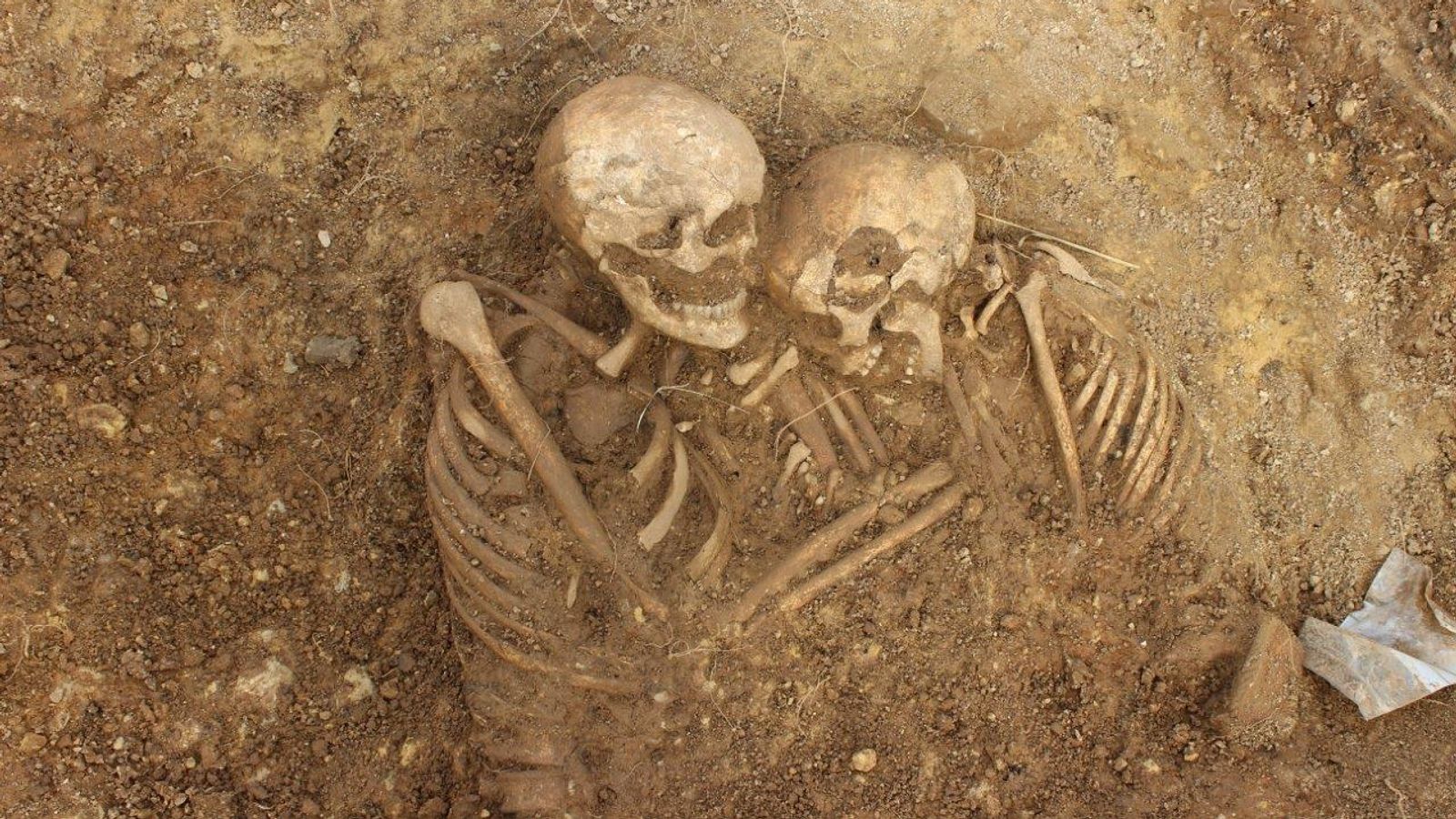The remains of a late-Roman aristocratic woman in a lead coffin have been unearthed in a previously undiscovered 1,600-year-old Leeds cemetery.
Described as a “once-in-a-lifetime find”, the extraordinary discovery could help unlock the secrets of one of the most significant periods in British history.
The breakthrough was made as part of an archaeological dig near Garforth in Leeds. The skeletons of more than 60 men, women and children who lived in the area more than 1,000 years ago were also found.
Those found in the cemetery are believed to include both late Roman and early-Saxon people, with the burial customs of both cultures found in different graves.
Archaeologists hope the site can help them chart the largely undocumented yet important transition between the fall of the Roman Empire in around 400AD and the establishment of the gamed Anglo-Saxon kingdoms thereafter.
Expert analysis will take place now the dig is complete, including carbon dating to decipher precise timeframes as well as detailed chemical tests which can determine extraordinary details such as individual diets and ancestry.
The discovery was made last spring and could only be made public now so the site could be kept site safe.
Gary Lineker to return to hosting sport for the BBC following row over migration tweets
Gary Lineker latest: BBC to apologise to presenter and return imminent after deal struck – as pressure mounts on corporation chairman | Gary Lineker latest
Gary Lineker: Row with BBC will hopefully be resolved to his satisfaction in next 24 hours, sources say
It was initially prompted by a previous, nearby excavation of late Roman stone buildings and a small number of Anglo-Saxon-style structures.
Kylie Buxton, on-site supervisor for the excavations, said: “It is every archaeologist’s dream to work on a ‘once in a lifetime’ site, and supervising these excavations is definitely a career-high for me.
“There is always a chance of finding burials, but to have discovered a cemetery of such significance, at such a time of transition, was quite unbelievable.
“For me it was a particular honour to excavate the high-status lead coffin burial, but it was a great team effort by everyone involved.”
Along with the Roman coffin, burial practices found in the cemetery indicated early Christian believes, as well as Saxon burials, as well as person possessions such as knives and pottery.
Read more on Sky News:
Everything Everywhere All At Once makes Oscars history as the night’s biggest winner
HSBC buys Silicon Valley Bank UK for £1 in deal which ‘protects customers and taxpayers’
David Hunter, principle archaeologist with West Yorkshire Joint Services, said the find could be of “massive significance” for what we understand about the development of ancient Britain and Yorkshire.
He added: “The presence of two communities using the same burial site is highly unusual and whether their use of this graveyard overlapped or not will determine just how significant the find is. When seen together the burials indicate the complexity and precariousness of life during what was a dynamic period in Yorkshire’s history.
“The lead coffin itself is extremely rare, so this has been a truly extraordinary dig.”
Following the analysis, it is hoped the lead coffin can be displayed in an upcoming exhibition at Leeds City Museum which will explore death and burial customs from across the world.
Councillor James Lewis, leader of Leeds City Council and member of the West Yorkshire joint services committee, said: “This is an absolutely fascinating discovery which paints a captivating picture of life in ancient Yorkshire.
Be the first to get Breaking News
Install the Sky News app for free
“It’s also an incredible reminder of the history and heritage which exists beneath our feet, and we look forward to hopefully playing our part in telling this story to visitors to the museum.”










